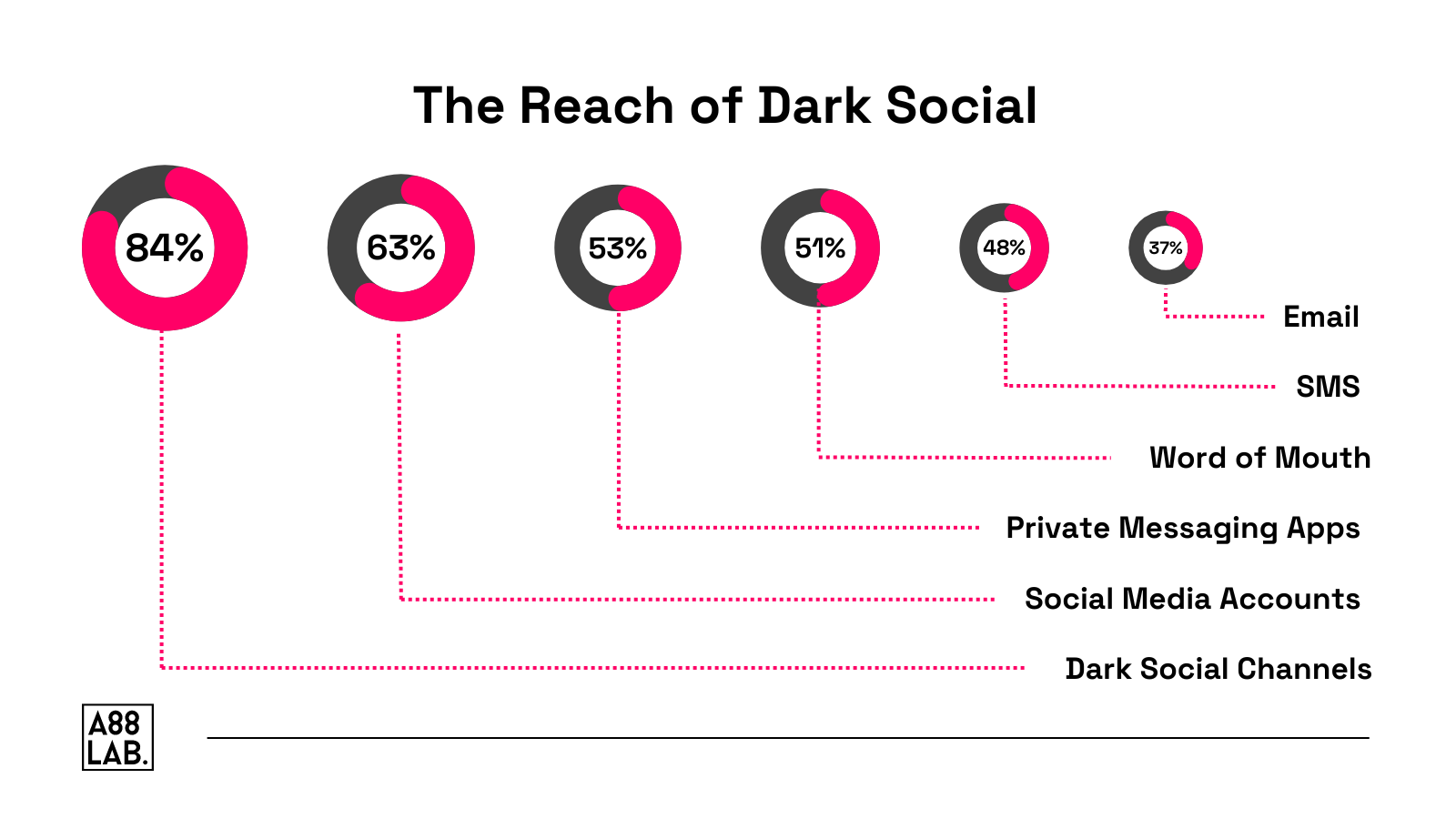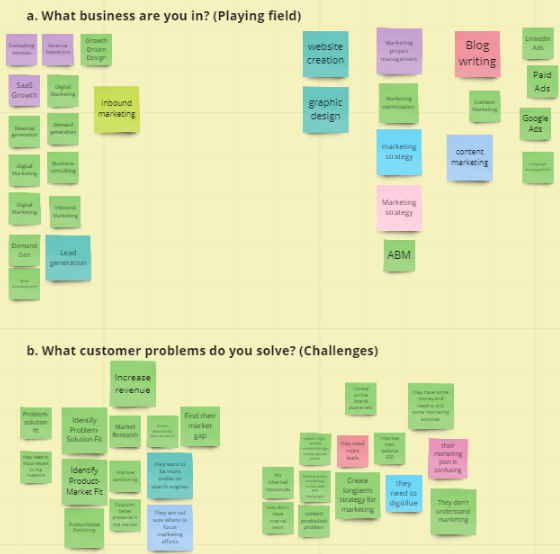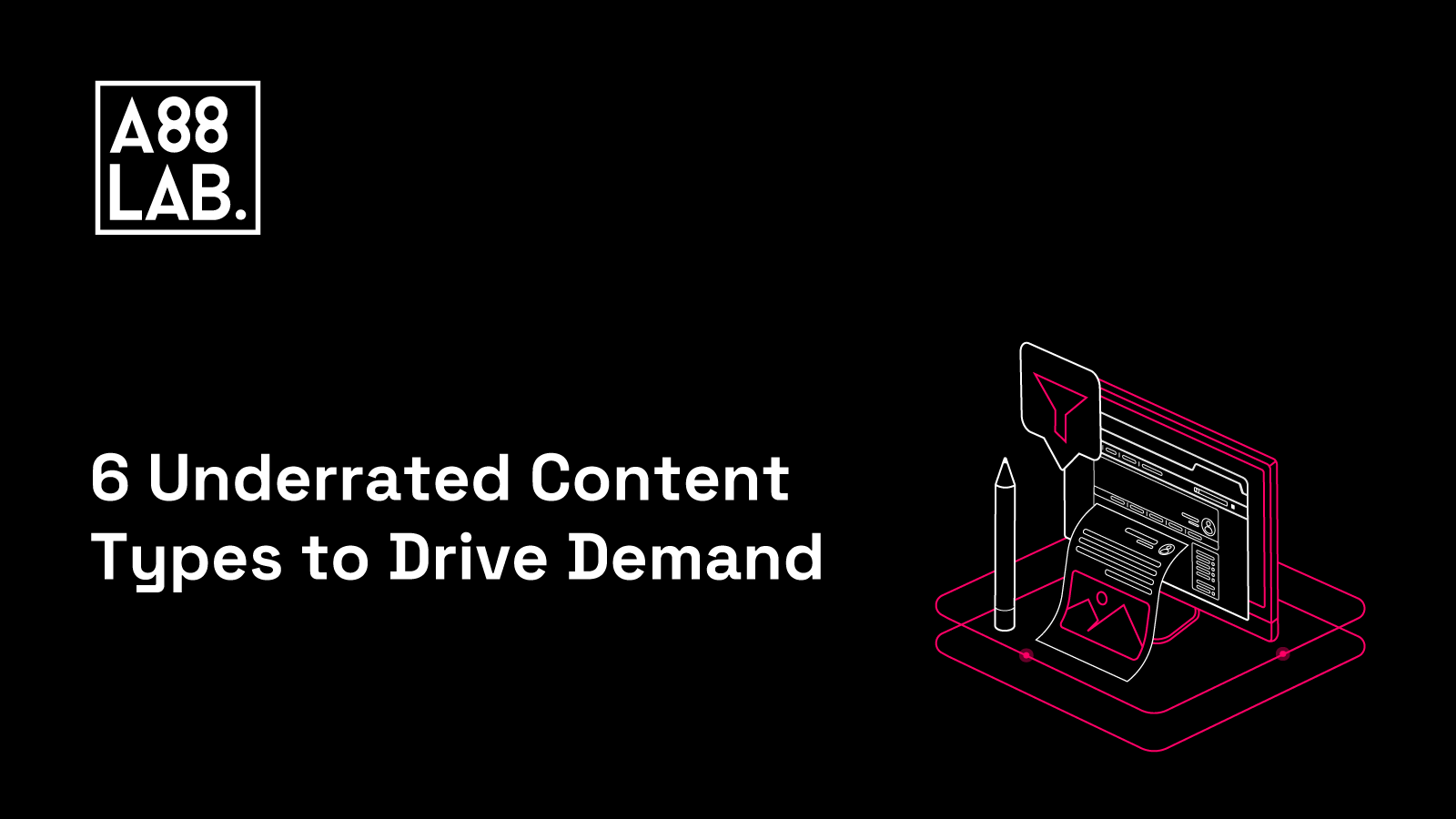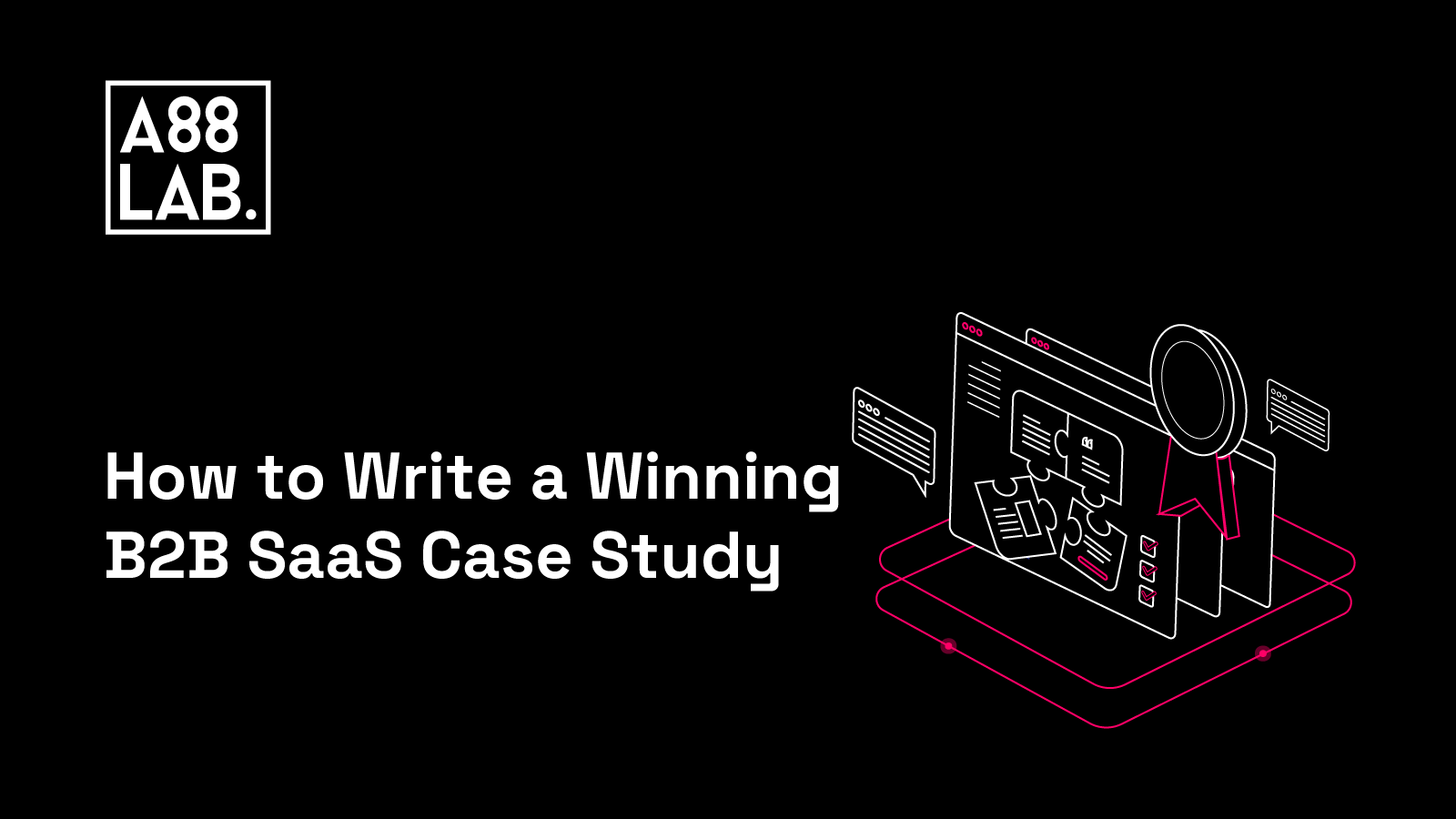2023 was a wide ride for SaaS marketers. LinkedIn made changes to its algorithm, Google introduced to us the new Google demand ads and made core updates that shook the SERPs, and Meta’s Threads took social media by storm in less than 48 hours after its release.
In this bit of a chaotic situation, you are probably wondering what content types would still stay relevant in 2024 and what other content types would arise that you would need to introduce into your content strategy to generate demand.
With every passing year, technologies grow, online behavior changes, and users crave variety. But you know what is the one thing that always stays the same? The search for authenticity. It’s something the audience is always looking for. Meet them there, and you’re already a step ahead of most other marketers.
Let's see how to revamp your content strategy in 2024 with some fresh and ‘not-so-popular’ content types so that you can stand out from your competitors and stick to your audience's mind.
1. User-Generated Content (UGC)
If you’ve been part of the SaaS industry for a while now, user-generated content or UGC is probably not something new to you. If this is the first time you come across this concept, we'll give you a quick textbook recap.
Let’s start first by saying that people will always trust other people more than any other type of marketing piece you produce. What does user-generated content have to do with this? Well, it is a type of content produced by other people, so it automatically is more authentic and relatable, making it a strong endorsement of your brand.
Besides increasing engagement, UGC also turns customers into brand ambassadors. Encouraging this might require you to take some initiatives like creating a dedicated hashtag, hosting contests, facilitating discussions on social media platforms, or showcasing user-generated reviews.
When implementing UGC into your demand generation strategy, there are two main overarching types: organic UGC and paid UGC.
Organic UGC
Organic User-Generated Content (UGC) is content that is shared by your real-life customers voluntarily. It is the most authentic type of content that you can receive from them. Here, you can see content like:
- Online reviews and testimonials: Positive ratings and reviews can be shared across your website, or you can turn these testimonials into graphics that can easily be shared on your social media platform.
- Photos: Usually, it involves an image of a customer using or showcasing the results of your product. Using a hashtag to organize these photos will make it easier for you to find and share them on their own platforms.
- Videos: Many YouTubers create videos sharing their latest software purchases or featuring several SaaS companies in a single video, like the video we shared below about ‘Top 5 Data Analytics Softwares’. You can use these videos to your advantage by sharing the entire video or a snippet that mentions your SaaS offering.
- Social Media: Even a simple positive mention of your brand on social media can be great content to reshare. You can repost on platforms like Twitter or take a screenshot and share it as a graphic on Instagram.
- Blogs: Bloggers may also mention your brand or product in one of their blog posts, whether as a standalone review or a swift mention in a broader post. You can share their quotes on social media or your website to spread the word.
Paid UGC
The other main type of UGC is paid UGC. Paid UGC is becoming increasingly popular, particularly among newer brands that want to share this type of content but don't have enough customers sharing posts about them yet.
Paid UGC is created by UGC creators which can be just as sincere as the regular one. The only difference is that the brand pays for it. If you want to work with UGC creators, you can reach out to them on platforms like Fiverr or Upwork. Alternatively, if your brand already has some fans, creators may reach out to you directly.
Once you have worked out a deal with a UGC creator, you can use the content they create and share it on your website or social media accounts as user-generated content.
2. Dark Social Content
Generating demand sometimes requires going beyond conventional marketing and looking for more underground marketing channels, such as dark social. According to a RadiumOne research study, 84% of social sharing happens via dark social. Crazy right 😱?!
Unlike traditional social media platforms where interactions are public and easily trackable, dark social refers to private, peer-to-peer sharing of content through channels like messaging apps, email, or private forums. This type of content exchange often goes unnoticed by marketers because it lacks direct attribution, making it challenging to measure and analyze. However, its impact on driving demand should not be underestimated.

Dark social content thrives on authenticity and trust, as it typically originates from personal recommendations and conversations within close-knit communities. To integrate dark social content into your demand generation strategy, take these three steps:
- Use insights: Use insights from tracking dark social to identify what resonates with your audience. Leverage these insights to refine your demand generation campaigns, making them more targeted and effective.
- Adjust your content strategy: Modify your content strategy based on what is most frequently shared on dark social. If a particular topic, format, or content style gets more dark social engagement, incorporate it into your strategy to improve your reach.
- Optimize for Conversion: Finally, make it easy for recipients of dark social shares to take the desired action by including clear and compelling calls to action in your content. This might include signing up for a newsletter, downloading a whitepaper, or purchasing a product.
Tracking the impact dark social content can have on your demand generation strategy can sometimes be tricky. To make it easier, consider applying these few steps:
- On your contact form, simply ask people where they heard about you. People here may write on the Internet or Google, so it is not very helpful. (We’ve faced this in our own experience)
- During your discovery calls, ask the prospect again how they heard about your company/product to get a more specific answer.
- Use link shorteners like Bitly; they provide some insight into your sharing.
- Create advanced segments in Google Analytics to enable specific filtering according to your defined criteria.
Dark social is the digital version of word of mouth and a key influencer for many consumers. By recognizing its importance, measuring its impact, and incorporating it into your overall strategy, you can use it as an advantage to reach more potential customers.
3. Curated Content
Publishing authoritative content is among the best ways to attract high-intent B2B SaaS leads.
A simple definition of curated content is content from others that you share on your social media accounts, although, in reality, it is a lot more than just this. Curated content may involve sharing a link to a blog post, creating a roundup of quoted advice from industry experts, or even simply sharing someone else’s social media post.
But curation is more than just collecting and sharing random content pieces. If you are careless or random in your approach, you could end up looking like a low-quality "secondhand shop" of ideas. Your audience will perceive your posts as a chaos of hit-or-miss items.
Real curation is more like a fine museum. You carefully select and attribute items that fit your brand image rather than creating everything from scratch yourself. Presentation is another key distinction. Always aim to publish content that complements your style, aligns with your mission, and meets your audience's needs.
Here are some curated content examples you can learn from:
- AdvisorStream is a marketing platform for financial advisors that helps build trust and credibility with personalized content. They use licensed content from reputable publishers like The New York Times to increase brand credibility and provide users with valuable information. As a result, they witnessed a 200% increase in views from licensed content and a 260% increase in lead capture on its platform from January to June 2020.
- Moz (you must know them) is an SEO software platform that helps brands increase website traffic, rankings, and visibility. The company provides analytical software to businesses and is known for its thought leadership in SEO best practices. Their blogs include posts by employees and thought leaders, and it's famous for its Whiteboard Friday series. Moz also offers freelance writers the chance to create high-quality content for Moz and score points.
- Buffer is a social media management software that allows their users to schedule and analyze their social media posts. They run a blog page that curates content on topics such as social media marketing, productivity, and entrepreneurship. This curated content is designed to help Buffer users improve their social media strategy.
4. Ephemeral Content
Ephemeral content, characterized by its temporary nature and short lifespan, is another underground content for driving demand in 2024. This content type, popularized by platforms like Snapchat and Instagram Stories, offers a sense of urgency and exclusivity, compelling users to engage with it quickly before it disappears.
The ephemeral nature of this content creates a fear of missing out (FOMO) among users, driving them to act quickly, whether it's to view a limited-time offer, participate in a flash sale, or catch behind-the-scenes glimpses of your brand. With ephemeral content, you can create a sense of immediacy and excitement around your products or services, encouraging conversions and driving demand.
To effectively incorporate ephemeral content into your demand generation strategy, consider applying these 3 following tactics:
1. Build Genuine Connections
By sharing unscripted snippets, backstage glimpses, and live updates, you can add a human touch to your brand and establish trust among your followers. Ephemeral snippets are spontaneous and sincere, instilling in viewers a sense of belonging to something exclusive. This authenticity can significantly strengthen long-standing relationships with customers and create brand advocates who are more likely to recommend a brand’s offerings to others.
2. Engage with Micro-Influencers
As a SaaS marketer, you may be wondering how to connect with influencers in a meaningful way. It's easy to feel overwhelmed and think that only big-name influencers can help your business grow. However, this is not the case. You can start small by reaching out to individuals or brands that are one or two steps ahead of you in the industry. Consider collaborating with them in your marketing campaigns, or ask them to give a shout-out to your SaaS product.
3. Measure and Adapt
Unlike traditional marketing strategies, whose success depends on metrics such as outreach, engagement, and conversions, ephemeral content disappears quickly, making it difficult to assess its lasting impact. However, there are ways to evaluate the effectiveness of your short-lived marketing campaigns. Keep track of indicators such as views, shares, and comments throughout your content’s lifespan, along with any spikes in website traffic or sales that align with your temporary campaigns.
With ephemeral content, there is a risk of posting irrelevant content if you focus too much on quantity over quality. Therefore, every piece of content you create should pass the "purpose test." This means you should ask yourself two questions:
1. What was your goal or target when you started the campaign?
2. Does this new piece of content contribute to achieving those goals?
The most effective strategies for this type of content are those that have a narrow focus and a clearly defined purpose.
5. Instructographics
Instructographics, although less mentioned, is another content type that got a huge traction recently. They are visually appealing instructional graphics that combine the effectiveness of infographics with the educational aspect of how-to guides.
Instructographics provide step-by-step instructions, tips, or tutorials in a visually engaging format. This makes it easier for the audience to understand even the most complex SaaS products.
For SaaS companies, making instructographics has many benefits in generating demand. For starters, they cater to the growing preference for visual content among online audiences, especially in industries where software interfaces or processes can be overwhelming for new users. By breaking down complex functionalities into easy-to-digest visual chunks, instructographics grab the attention of your potential users, creating interest and demand for your SaaS product.
Instructographics also serve as valuable educational resources that show the SaaS company's knowledge in their respective niche. By providing practical insights and solutions to common challenges or tasks related to your solutions, you are seen as a trusted advisor, building credibility and trust among the audience.
This content type is perfect for your social media accounts, considering it has a higher sharing potential.
6. Storyboard
A storyboard is a type of content format that combines text, images, and illustrations to create engaging narratives. Storyboards can be super effective when using visuals to convey an intention. This is because the human brain retains 70% of information through stories, whereas only 10% comes from simple facts, data, or statistics.
The most successful marketers know that the only way to get people to listen to their message is to tell a story that appeals to their emotions. A compelling storyline combined with an emotional connection is a sure way to create a memorable message, bearing in mind the human brain processes visuals 60,000 times faster than text.
To craft your compelling SaaS storyline, you can use tools like StoryboardThat, which is a user-friendly platform that allows you to create compelling visual narratives to bring your product's features to life.
The main motto of the storyboard is "show, don't tell," meaning it's usually more convincing to see once than to hear twice. A storyboard is a great tool for helping the audience visualize what you have to offer. You can use storyboards for presentations, commercials, and product demos. Think of it as a comic strip showing the sequence of image panels that makes it easy for your audience to visualize what your product has to offer.
How to Execute and Measure Your Content Marketing Campaign
Successful content marketing that generates demand requires more than just deciding about your content type. Executing a content marketing campaign that really works and knowing how to measure its success requires careful planning, smart implementation, and detailed analysis.
To make sure your campaign really connects with your audience and creates demand for your SaaS product, ask yourself the following questions:
1. Have you done a comprehensive research?
At A88Lab. before we develop a content strategy for our clients, we first try to figure out what is their online presence. Are they active on social media? Do they publish blog posts regularly? This helps us understand what type of content we need to produce for them and move forward with the strategy.
In addition to analyzing their online presence, we also analyze the presence of their competitors to find if there are any gaps that aren’t filled where they can stand out and differentiate themselves both organically and through paid initiatives.
2. Are you aligned with the target audience's preferences?
Next, ensure that the content you produce aligns with the preferences of your target audience. To help you understand what motivates your audience, what they need, and what problem they are trying to solve, it's a good idea to adopt a 'Jobs to Be Done' (JTBD) framework.
This framework involves identifying the main tasks your audience wants to complete while consuming your content and then outlining how you can help them accomplish those tasks. By understanding the main drivers for people using your product or service, you can create content that is more targeted and effective in meeting your audience's needs.
Example of jobs-to- be-done Framework:

3. Do you have topic ideas to cover?
Brainstorming ideas can sometimes feel like navigating a maze without a map. It's a common scenario where you and your team might find yourselves stuck in a loop of indecision.
To break free from this cycle, consider adopting a structured approach to generating topic ideas. One thing that can help you with this is creating pillar pages or pillar posts, which are pieces of content that serve as the cornerstone of a topic cluster. This can help you outline the core themes or topics relevant to your SaaS product or industry and serves as the foundation from which you can come up with multiple blog posts or social media post ideas.
3. Are you analyzing your content performance?
Beyond simply creating great content, you need to understand how it's performing across various channels and platforms. While software attribution tools provide valuable insights into the performance of your content on traditional marketing channels such as social media, email, and SEO, they may not capture the full picture.
One often overlooked aspect of content performance analysis is dark social channels. These channels, such as private messaging apps and email, play a significant role in content sharing but are difficult to track using standard analytics tools. This is why you need hybrid attribution that combines both software attribution data and additional methods, such as URL tagging and UTM parameters, to track the performance of content shared through dark social channels.
Conclusion
User-generated content (UGC), dark social, curated content, ephemeral content, instruct graphics, and storyboarding are all great content types that offer unique opportunities to engage with your audience and foster brand advocacy.
But it's not enough to just implement them. You need to execute them carefully and measure their performance comprehensively. By aligning your content with your audience's preferences, setting clear goals, and analyzing performance across different channels, you’ll develop a killer demand generation strategy that will deliver maximum impact.
Remember, to generate demand, you'll need all three: creativity, strategy, and data-driven insights to achieve success in the competitive SaaS industry.
.png)


.png)